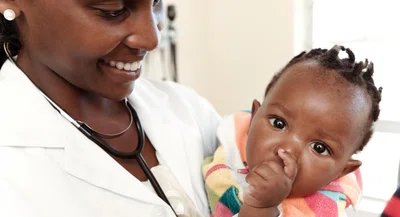

Previous Page
${prev-page}
Next Page
${next-page}

Local Implementation of the LEAP Program – Advice for Academic ID Training Programs

The following is implementation advice for academic ID training programs wishing to develop a local version of LEAP training. These recommendations are drawn from the experience of the national LEAP fellowship program, and particularly ID training programs that have successfully supported fellows for multiple years in a row.
• Create ongoing health department relationships – The most successful training programs had longstanding working relationships with their local or state health departments. Ideally, faculty from the ID program held dual positions as health department staff, but at a minimum the health department and ID division had either ongoing programs (such as STI training rotations, epidemiologic studies or research projects) or frequent venues for communication between the HD and academic faculty such as regular HD participation in the ID program’s educational conferences, or ID faculty service on public health advisory committees. These existing connections appear to be the foundation required for larger cooperative efforts such as the LEAP program.
• Identifying faculty with health department experience – One core element of the LEAP fellowship is mentorship between LEAP fellows and more senior physicians with experience working with health departments. In developing a local LEAP fellowship, having a listing of physician mentors that have health department experience – so the potential LEAP applicant can meet with them and identify who they want as a mentor – is critical in lowering the level of effort required for candidates to enter the program.
• Identifying hospital epidemiology/infection prevention experiential activities – Part of the LEAP fellowship involves engaging in a number of academic hospital epidemiology/infection prevention program activities. Early discussion with HE/IP leadership to identify when and where these activities take place, as well as key personnel, is useful for early scheduling of these activities by the LEAP fellow upon the start of their fellowship year.
• Identifying antimicrobial stewardship experiential activities – Part of the LEAP fellowship involves engaging in a number of hospital antimicrobial stewardship program activities. Early discussion with ASP leadership to identify when and where these activities take place, as well as key personnel, is useful for early scheduling of these activities by the LEAP fellow upon start of their fellowship year.
• Identifying medical leadership training opportunities (if any) – One critical need that LEAP fellows have repeatedly brought up after the fellowship is the need for medical leadership training since many career paths that include public health also entail a medical leadership role either inside or outside the hospital. ID trainees are often not aware of the medical leadership training opportunities at academic training facilities (such as medical leadership courses, communications training, project management training), if any exist. In our experience, these trainings are infrequent and often in competitive demand. Identifying when/where and how fellows would get access to these opportunities prior to the start of the fellowship year reduces the risk that fellows miss potential leadership training opportunities due to lack of awareness.
• Identifying potential fellow funding sources – While protecting/funding a full 75% of a LEAP fellow’s time is probably not required, having at least some protected nonclinical time is necessary for the experiential activities required by the LEAP fellowship. Critical assessment of the national LEAP program suggests that as little as 20% of time protected (one day a week) might be sufficient. One of the critical pieces of groundwork for any ID training program prior to implementation of a local LEAP fellowship is identifying how a fellow would have this protected time. Some possibilities raised by past academic training partners include potential nonprofit or foundation funding sources.